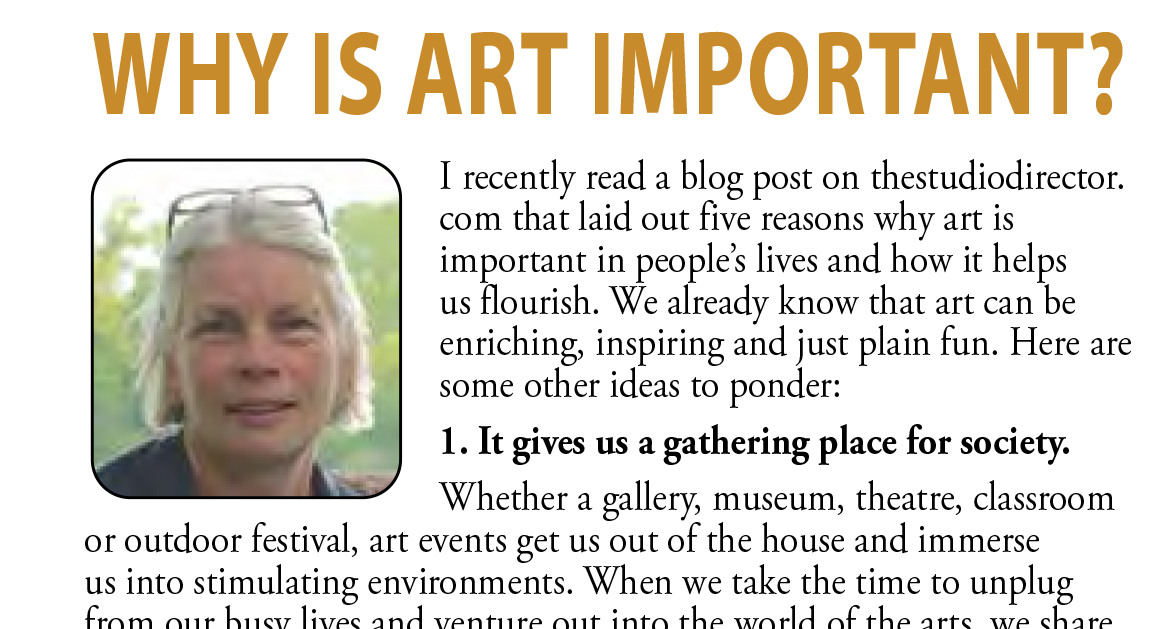
3 minute read
WHY IS ART IMPORTANT?
Margaret Tessman, editor
I recently read a blog post on thestudiodirector. com that laid out five reasons why art is important in people’s lives and how it helps us flourish. We already know that art can be enriching, inspiring and just plain fun. Here are some other ideas to ponder:
1. It gives us a gathering place for society.
Whether a gallery, museum, theatre, classroom or outdoor festival, art events get us out of the house and immerse us into stimulating environments. When we take the time to unplug from our busy lives and venture out into the world of the arts, we share a bond with our community and massage under-used neurons. And research has shown again and again that support for the cultural sector creates positive economic spinoffs, including job creation and growth in business and infrastructure.
2. When art creates a stir, it has the potential to spark healthy conversations.
Art can be a powerful tool for change and oh boy, do we ever need opportunities for healthy debate right now, instead of listening to people stand at opposite ends of the poles yelling, “I’m right!” “No, I’m right!” ad nauseum. Art appreciation is all about individual taste and interpretation, but expressing one’s point of view on the subject rarely devolves into a shouting match.
3. It provides historical context.
I wonder sometimes if the death of classical education has narrowed the perspective that we bring to our world view, and whether we are poorer for it. With Google and ChatGPT as our go-to resources, looking for information beyond what our server serves up can tax our time and skill. I’m not espousing remedial art history courses, but knowing what has gone before gives us knowledge that adds to how we speak, how we feel and how we see the world around us. So yes, maybe I am espousing remedial art history courses.
4. It helps develop soft skills.
Soft skills can be difficult to define, but they encompass intangibles like thinking creatively, adapting to change and collaborating well with others. These kinds of personal attributes aren’t necessarily teachable, but they can be enhanced by art activities that encourage students to try something new, express themselves emotionally and problem-solve through challenges.
5. It promotes expression and creativity.
When a toddler picks up a crayon, the world is their oyster. When a child hears music, they start dancing (unselfconsciously, I might add). And babies who are preverbal will sit still to be read to and sing without knowing the words. So let’s borrow a page from childhood and keep on dancing, singing, reading to each other and drawing on the walls.










